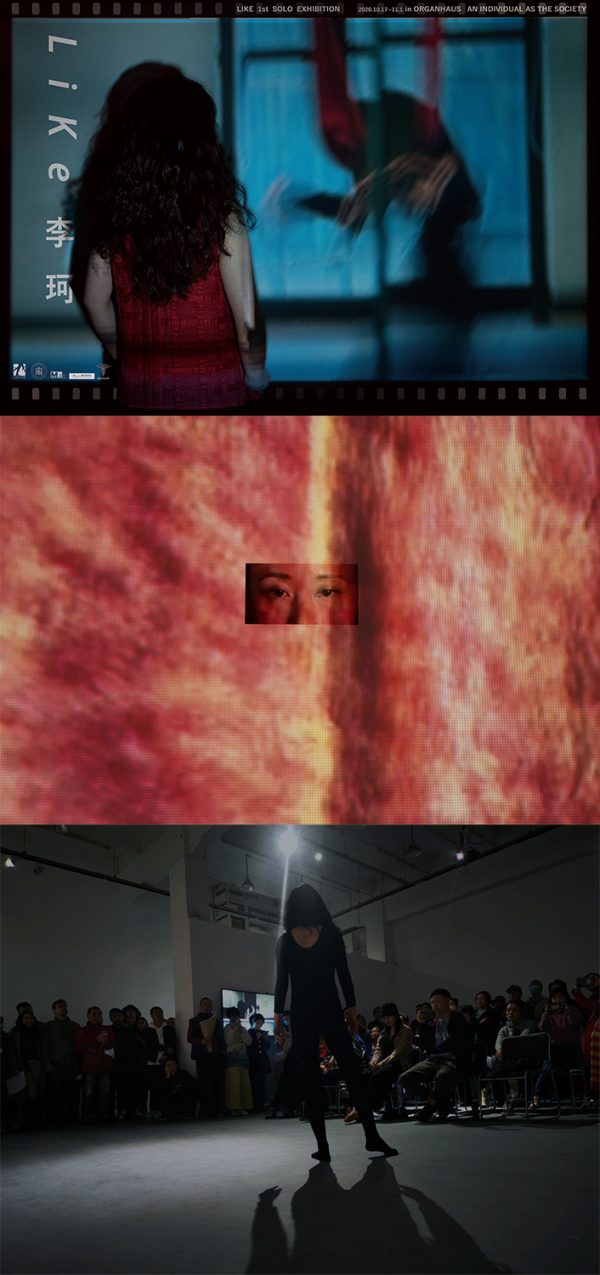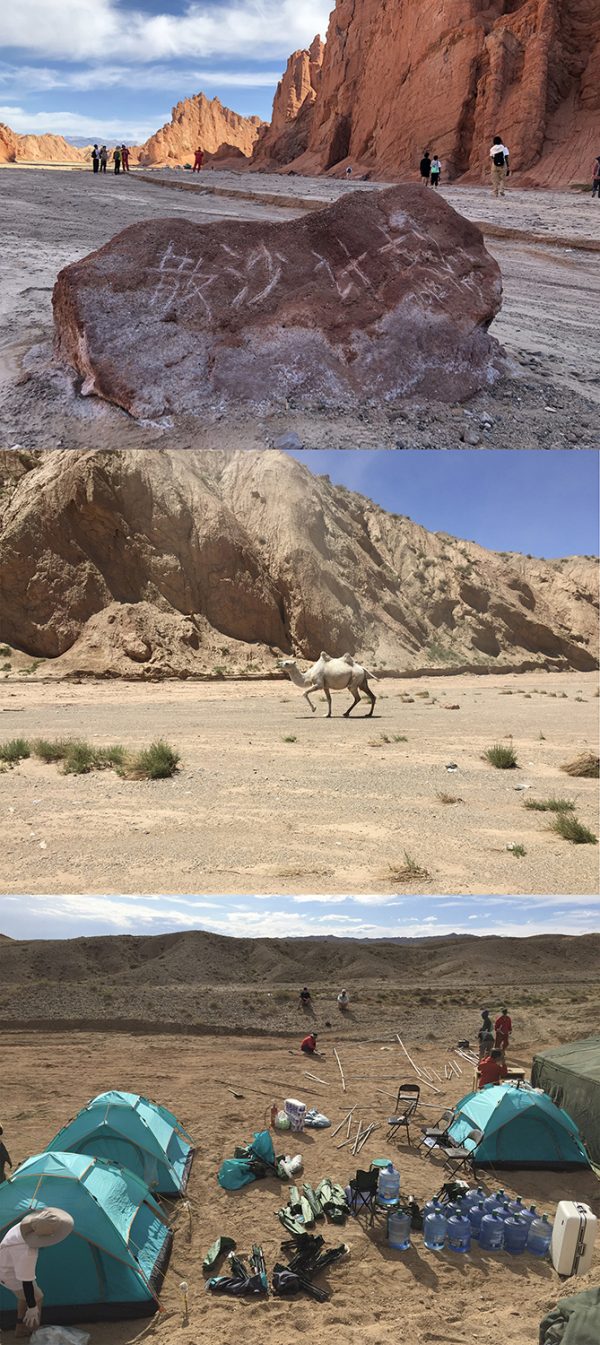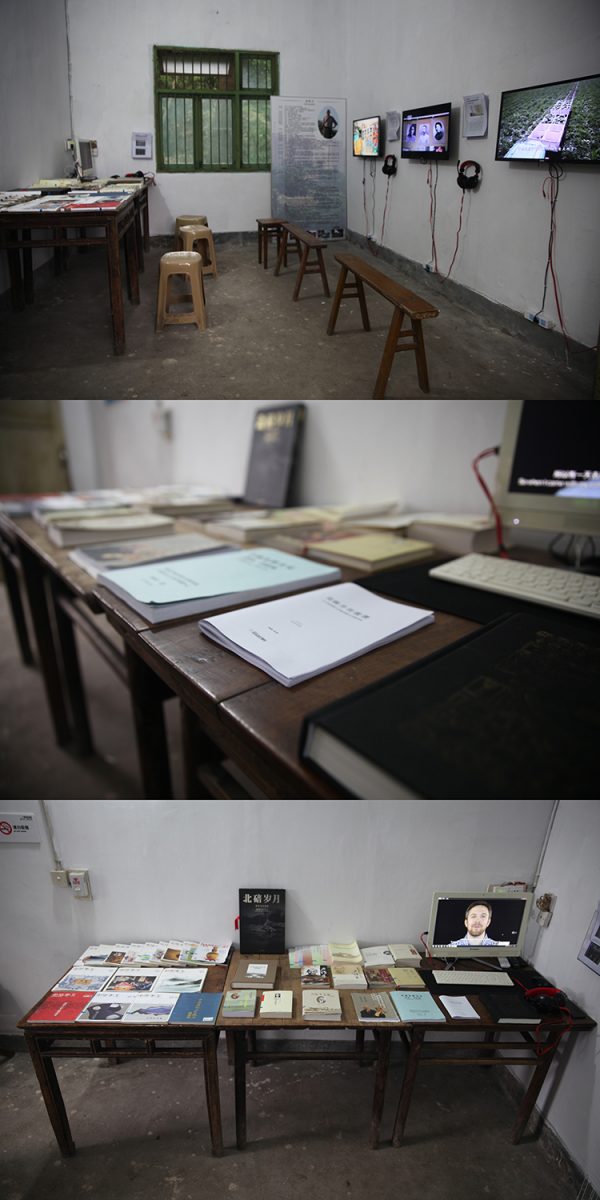徐然 XU Ran
b.1988 山東青島
畢業於四川美術學院油畫系
工作、生活于廣州
b.1988 Qingdao,China
Graduated from the Oil Painting Department of Sichuan Fine Arts Institute
Work and Live in Guangzhou,China
以人為本的藝術生產方式
在機構工作了三年左右時,看到了一些集團公司的幾種「機構類型實驗」。正值重慶建立城市文化,工作室所在的區域有文化活動的需求,也有少量支援資金和限制條件。我當時做了投標並試運營了兩次(藝術企業),計算出投入產出數字後,大概用這種配比:
• 30%購買藝術家朋友的創作
• 40%用於展覽支出
• 30%支付場地水電日常消耗費用
我自己投入的是初始場地改造費用和大部分人力,相當於被條件反推着形成了自己的第一個機構。我可以主導工作方向的時候,學着理解資方的邏輯,保持良性溝通,通過一些辦法轉化為可以保持內容自由度,也能為藝術家爭取利益的事情。當時這個機構起到了活化社群的作用,藝術家多了定期展示、交流的場地,少量收入,可以作為製作作品的費用,也產生了額外銷售、增加一些委託創作、吸納新朋友。做到對各方有利就可以持續營運。
「藝術企業」常被詬病的一點:當代藝術的概念成為話術、手段,藝術工作者要清楚背後模式,以免覺得理想枉負。對於比較典型的兩種非營利機構─高利潤企業旗下的基金會、文化場館型非營利機構,以及由生產者自發的非營利機構,前者目標是建立企業文化集群概念,增加影響力,但大部分沿用企業的管理模式甚至管理結構,在過程中也會遇到如何量化、驗證效果的問題,需要扭轉觀念。而對於自發非營利機構來說,要面對資金自籌以及管理經營的難題。實際上,我們在同一個社會中運轉相互串聯的因素很多,相互之間也發生着轉化、吸納、分裂,不是一個針鋒相對的「對抗」關係。各地區文化環境不同,像廣州有長期的自組織傳統,朋友和前輩們重視在工作中的倫理實踐,而且不論是寫作者還是藝術家真的有在日常中實踐,令我十分震憾和感動。
一個人以上的團體在共同工作、生活中就存在組織形式(可以說「泛」機構),可能是無意識的依照舊習,可能是依照範本(現存的或記錄中的),或者進行理想化的探索和試驗。當然,「機構」背後的模式是具有流動性的,「標準化」也是一時的。可能是在此刻我們嚮往的標準是這樣,應用的時候要看是否適配當下,是否會向着我們希望達到的目的走;隨後的發展中也需要根據適應情況做調整。在合作或藝術機構工作中,我覺得花精力磨合、互相尊重、共同營造是很重要的。藝術實踐中不應以成敗論對錯,要時刻保持對這種邏輯的警惕。藝術機構是最好的實踐和實驗場所,我希望不論自己作為其中的哪一方,嘗試構建一種以人為本、相互尊重、可持續的生產方式。
關於「散沙計劃」項目
「散沙計劃」是由藝術家曾瑞和我共同發起的一個以新疆庫車為據點的藝術項目。第一期於2018年展開,在辦活動的過程中遇到了資源整合的可能性。於是公開招募組織了15位藝術家赴新疆庫車展開了11天的駐地項目,項目前後的時間自由,我們多數人趁這個機會在新疆呆了不短的時間。期間的親身體驗很珍貴,很多的感觸發生在項目結束之後,慢慢意識到其重要性,隨着工作經驗的累積想要以更好的方法推動。今年繼續推出的「散沙計劃二」我們有意識地囊括漢文化以外的視角,秉持「流動」的概念,會更注重歷史與個人史的挖掘,也要去促成新的親身體驗。
「散沙計劃」以我們自身覺得重要的事情連接議題,根據議題相關度發掘合作者,議題也在交談中流動。在前期工作中,協調大家的方式組織調研。組織工作常常面對着許多突發事件,比如因為疫情反覆,可能從集體的行走變成多線個體的行走;支持條件也在不斷變化,最近幾個月狀況起起伏伏。我們只能面對,並保持靈活性。「散沙計劃一」曾經以「集體創作」與最終的展覽呈現為目標。當時實地部分做完後,總覺得「哪裏不對」,所以製作展覽的部分沒有全部完成。調整後的計劃二目前有明確的目標:盡量完整地集結資料;在當地落地一個小型駐地機構。期間會用展覽的方法促成作品製作,贊助藝術家,展覽不是最終目的。
「散沙」曾是偶得的一個題目:力不成形,望去又是漫漫一體。沒想到「散沙」一直映照着這個項目。
A People-oriented Art Production Approach
After working in art institutes for about three years, I have seen several ‘organizational experiments’ in many companies and enterprises. At that time, Chongqing was developing its urban culture, the area where my studio was located has a demand for cultural activities, also has a small amount of supportive funds and conditions. I did a bidding and tried operating [art organisation] twice. After calculating the input-output figures, I got this ratio:
• 30% purchasing artists’ works
• 40% exhibition expenses
• 30% water and electricity and daily consumption of the
venue
What I invested in was the initial site renovation cost and most of the manpower. It seemed like my first organisation was pushed by various conditions. When I could make decisions in working directions, I learnt to understand the logic of being an employer: maintaining good communication, and through some methods, it has the potential to achieve freedom of content and fight for the interests of artists. At that time, this organisation played a role in revitalising the community. Artists had another venue for regular exhibitions and exchanges, and a small amount of income could be reallocated into their art production. It also made additional sales, generated some commissioned projects, and attracted new friends. When it is beneficial to all parties, the organisation will sustain.
It is often criticised that ‘art enterprises’ use the concept of contemporary art as its rhetoric and strategy. Art practitioners must be clear about the operation behind them so as not to feel that their ideals are in vain. For the two typical kinds of non-profit organisations: foundations under high-profit companies in partnership with non-profit organisations in cultural venues, and self-initiated non-profit organisations, the former aims to create the concept of corporative cultural clusters and increase its influence. Some of them follow the enterprise administration model and even the management structure inherited from the parent corporation, so during daily practices, they probably find it difficult to quantify and verify the effect, and have to change their recognition towards the art industry in the end. For independent Non profit organisations, they have to face financial and management problems. In fact, both operate in the same society with many factors that correlate with each other. There are transformations, absorptions, and divisions among them, not like a tit-for-tat ‘antagonistic’ relationship. Moreover, the cultural environment varies in different regions. From my observation and experience, Guangzhou has a long-term self-organization tradition. I’m really surprised and touched that many friends and predecessors emphasise working ethics in their daily practice, no matter being a writer or an artist.
When there’s more than one person in the working and living environment, it would be regarded as an organisational structure (let’s put it as a ‘pan’ organisation). It may unconsciously follow old habits, may be based on templates (existing or recorded), or idealised exploration and attempts. Of course, the model behind ‘institutions’ is fluid, and ‘standardisation’ is also temporary. Perhaps the standard we yearn for at this moment, when applying it, it depends on whether it fits the current situation and whether it leads us towards the initial goal or not; subsequent development also needs to be adjusted to adapt to different situations. During institutional work, I think it is very important to give efforts in the run-in period, respecting each other, and co-constructing. In art practice, success or failure should not be equivalent to right or wrong, and we must always be vigilant against this logic. Art institutions are the best places for practice and experimentation. I hope no matter which party I am in, I will try to build a people-oriented, respectful, and sustainable production approach.
About the ‘Scattered Sand’ project
‘Scattered Sand’ is an art project based in Kuqa, Xinjiang jointly initiated by artist Zeng Rui and myself. The first phase was launched in 2018 when we encountered the possibility of resource integration during the process of organising activities. We recruited 15 artists through open call, and then went to Kuqa, Xinjiang for an 11-day residency project, while most of us took this opportunity to stay in Xinjiang for a longer time. The personal experience during this period is very precious. A lot of feelings occurred after the project, and I gradually realised its importance, and I wanted to promote it in a better way with the accumulation of work experience. In ‘Scattered Sand II’ that launched this year, we consciously include perspectives other than Han culture, uphold the concept of ‘mobility’, pay more attention to the excavation of history and personal history, and also enhance personal experiences.
The ‘Scattered Sand’ project links issues that are important from our perspectives, and finds collaborators based on the relevance of certain issues, while subject matters also extends during conversations. In the preliminary work, we organise research trips in a coordinated way. Organisational work often faces many changes. For example, due to pandemics, it may change from group walking tours to multiple individual walking tours; supporting conditions are constantly changing, and the situation has fluctuated in recent months. We can only face and remain flexible. ‘Scattered Sand Project I’ once aimed at collective creation and the final exhibition presentation. At that time, after finishing field research, we always felt that ‘something was not right’, so the final exhibition production was not entirely completed. The adjusted ‘Scattered Sand Project II’ currently has clear goals: to gather materials as completely as possible; to launch a small-scale resident organisation locally. During this period, exhibition is not the ultimate goal, instead, it will be used as a method to push forward the production of works and sponsorship for artists.
‘Scattered Sand’ was a spontaneous title: the power is not centralised, but it looks like a whole. Unexpectedly, the concept of ‘Scattered Sand’ has been enlightening this project.
- 黃康迪 WONG Hong Tik
- 陳毅哲 CHEN Yi Che
- 馮以丹 Edy FUNG
- 李劻華 Khris LEE Hong Wah
- 詹昫嵐 Liv TSIM
- 梁慧欣 LEUNG Wai Yan
- 梅愷盈 MUI Hoi Ying, Carol
- 黎穎虹 LAI Wing Hung
- 張綺君 CHEUNG Yee Kwan, Sonia
- 強天锴 QIANG Tiankai
- 朱建林 ZHU Jianlin
- 鄺詠君 KWONG Wing Kwan
- Iris WONG
- 楊思嘉 Sijia YANG
- 張文智 ZHANG Wenzhi
- 盧韻淇 LO Wan Ki
- 馮靖嵐 FUNG Ching Laam
- 張亦勤 CHEUNG Yick Kan
- 葉雯 Manny YIP
- 無碼計劃 Project NoCode
- 劉菁兒 LAU Ching Yee, Cathleen
- 余榮基 YU Wing Kei, Rik
- 劉暢 LIU Chang
- 陳翠雯 CHAN Chui Man
- 許芷瑋 HUI Gi-Wai, Echo
- 譚綽琳 TAM Cheuk Lam, Jessie
- 鄭天依 ZHENG Tianyi
- 王昱珊 WONG Yuk Shan
- 李曉巧 LI Xiaoqiao
- 屈鍵晴 WAT Kin Ching
- 劉清華 LAU Ching Wa, Jess
- 曾淑芬 TSANG Shuk Fan, Tracy
- 張紫茵 Dorothy CHEUNG
- 林琬晴 LAM Yuen Ching, Esther
- 彭景 PENG Jing
- 馮以力 FUNG Yee Lick, Eric
- 張家樺 Janice CHEUNG
- 鄧廣燊及袁雅芝 TANG Kwong San & YUEN Nga Chi
- 潘美義 POON Mei Yee
- 徐然 XU Ran
- Florence LAM
- 朱穎琳 CHU Wing Lam, Kelly
- 黃姬雪 WONG Kei Suet, Ice
- 余淑培 YU Shuk Pui, Bobby
- 鄧卓敏 TANG Cheuk Man, Penelope
- 李珮瀅 LEE Pui Ying, Hiya
- 吳咏詩 Wing Sze NG
- 張國樑 Weera It ITTITEERARAK
- 黃詩慧 WONG Sze Wai
- 鄭裕林 CHANG Yue Lam
- Landescape1823
- 鄭虹 CHENG Hung, Dony
- 陳庭 CHAN Ting
- 馮倚天 FUNG Yee Tin, Thomas
- 譚敏晴 TAM Man Ching, Michelle
- 朱湘 ZHU Xiang
- 程新皓 CHENG Xinhao
- 沈軍 SHEN Jun
- 梁望琛 LEUNG Mong Sum, Joseph
- 李繼忠 LEE Kai Chung



